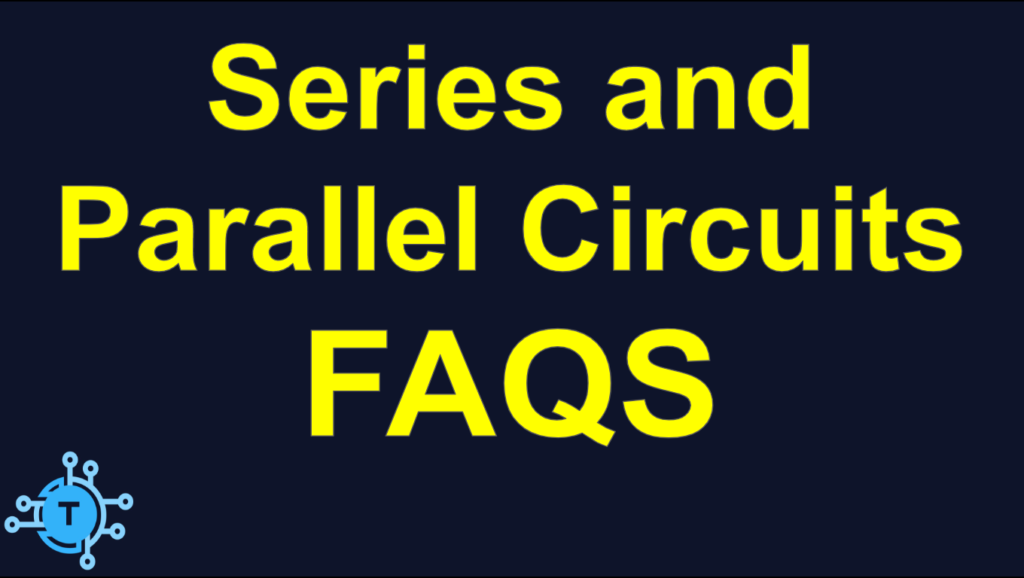
Frequently Asked Questions about Series and Parallel Circuits is another in a series of FAQS about electricity and electronics that are oriented toward Appliance Technicians and HVAC Technicians.
Frequently Asked Questions about Series and Parallel Circuits
Q. What is a Circuit?
A. An electric circuit consists of a voltage source, a continuous conductive path, and a load.
Q. What is a Series Circuit?
A. A series circuit is a circuit that has two or more loads connected end-to-end.
Q. How does current behave in a series circuit?
A. The current is the same throughout the entire circuit.
Q. How does Voltage behave in a series circuit?
A. The Voltage divides among the loads in a way that depends on the resistance of each Load, and adds up to the source voltage.
Q. How do you determine the voltage across a load in a series circuit?
A. You can determine the total circuit current by finding the equivalent resistance of the circuit. You can then divide the source voltage by the equivalent resistance to find that current. That current multiplied by each load’s resistance gives you the respective voltage across each load. Alternatively, you can use the Voltage Divider Formula. To find the voltage across load R1, you would use VR1 = Vsource (R1 / (R1 + R2+Rn)), where Vsource is the source voltage of the circuit, R1 is the resistance of Load #1, and R2 is the resistance of Load #2). Rn is the resistance of the 3rd or 4th load, if they exist.
Q. What is the equivalent resistance of a Series Circuit?
A. It is the sum of all resistances.
Q. What is a Parallel Circuit?
A. Where two or more loads (or branches) are connected in parallel.
Q. How does voltage behave in a Parallel Circuit?
A. The sum of the voltage across each load is equal to the source voltage.
Q. How does current behave in a Parallel Circuit?
A. It splits up among the loads in a way that depends on their respective resistances and rejoins before returning to the voltage source. The sum of the current through each branch is equal to the total circuit current.
Q. How do you determine the current through a load (branch) in a Parallel Circuit?
A. The easiest way is to use Ohm’s Law. You know that the voltage across each load is equal to the voltage source. Thus, the current though R1 or example would be IR1 = Vsource / R1, where R1 is the resistance of R1.
Q. What is the equivalent resistance of a Parallel Circuit?
A. It is always less than the lowest value resistor. If you have two resistors in parallel of the same value, the equivalent resistance is 1/2 of each value. If you have three of he same value, the equivalent resistance is 1/3rd of each value. If they don’t have the same value, for two resistors in parallel, you can use the product over the sum. To find Re, you would say that Re = (R1 x R2) / (R1 + R2). To find Re with more than two resistors in parallel, use the reciprocal formula or 1/Re = 1/R1 + 1/R2 + 1/R3 + 1/Rn.
To donate to the Tech Circuit – CLICK HERE
For additional electrical and electronics learning material for field techs, visit our homepage at http://www.TechCircuit.org or our Facebook group at https://www.facebook.com/groups/746823709133603 or our YouTube Channel
at https://www.youtube.com/@TheTechCircuit
TC
We are a participant in the Amazon Services LLC Associates Program, an affiliate advertising program designed to provide a means for us to earn fees by linking to Amazon.com and affiliated sites.
